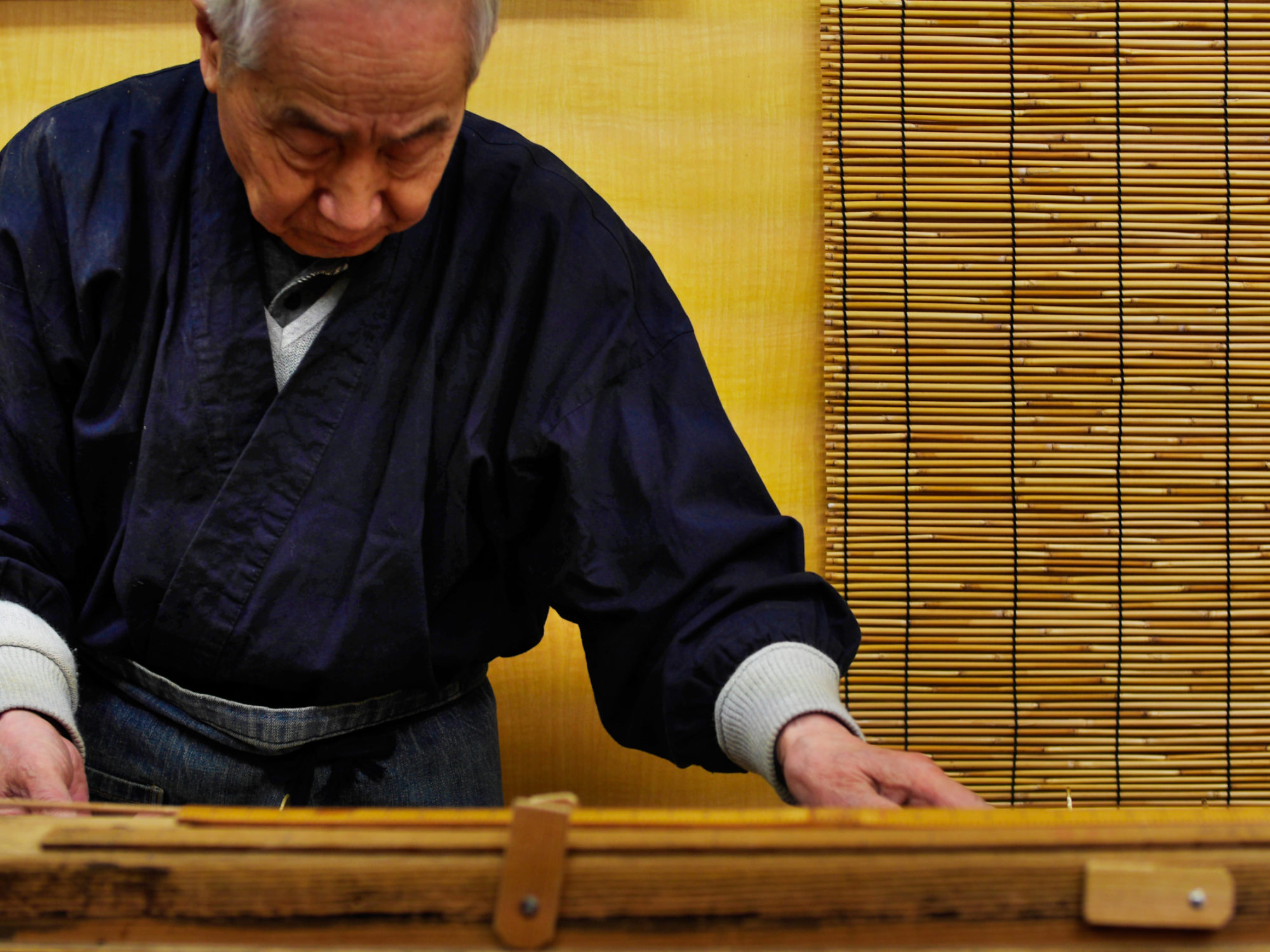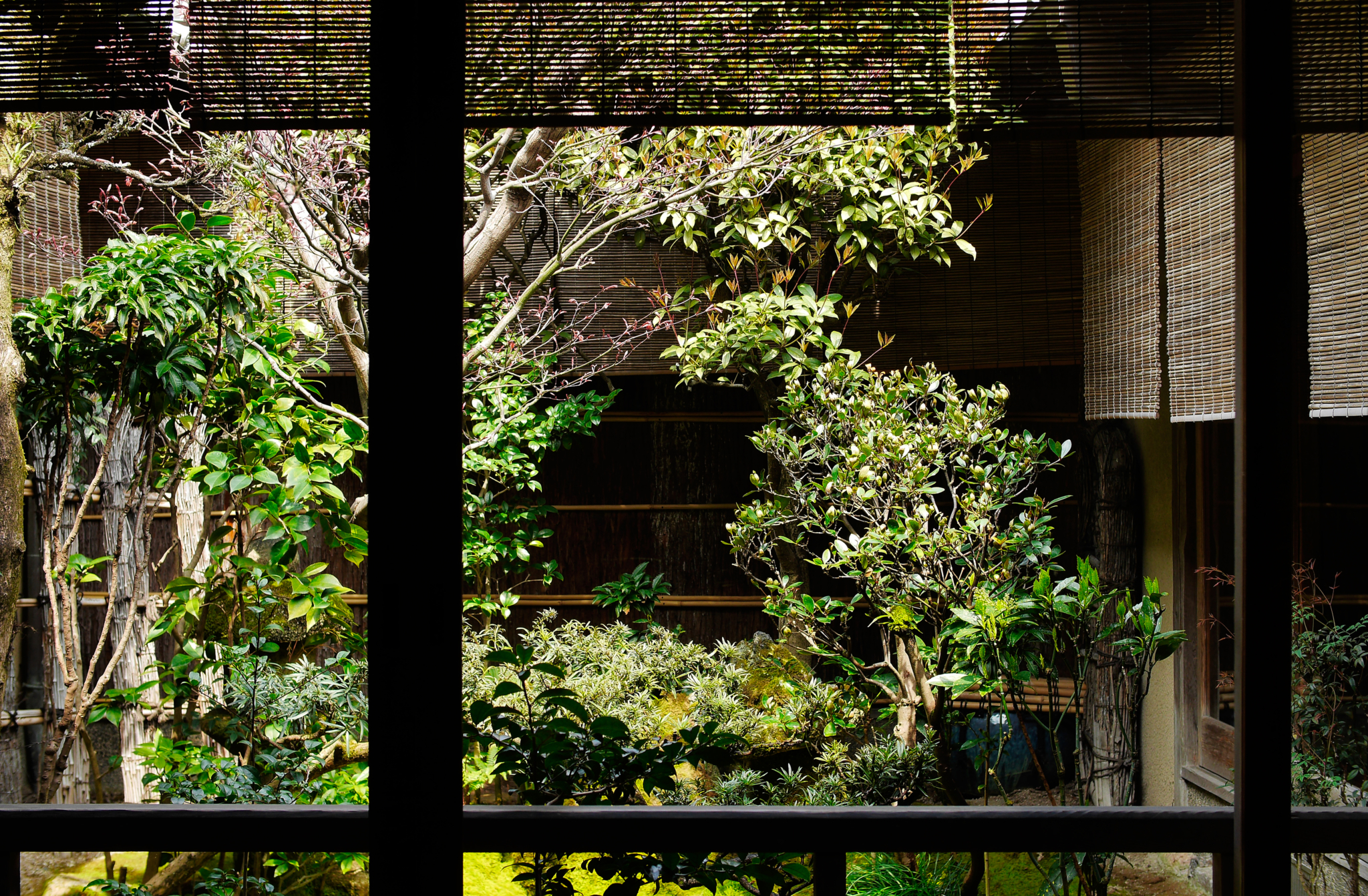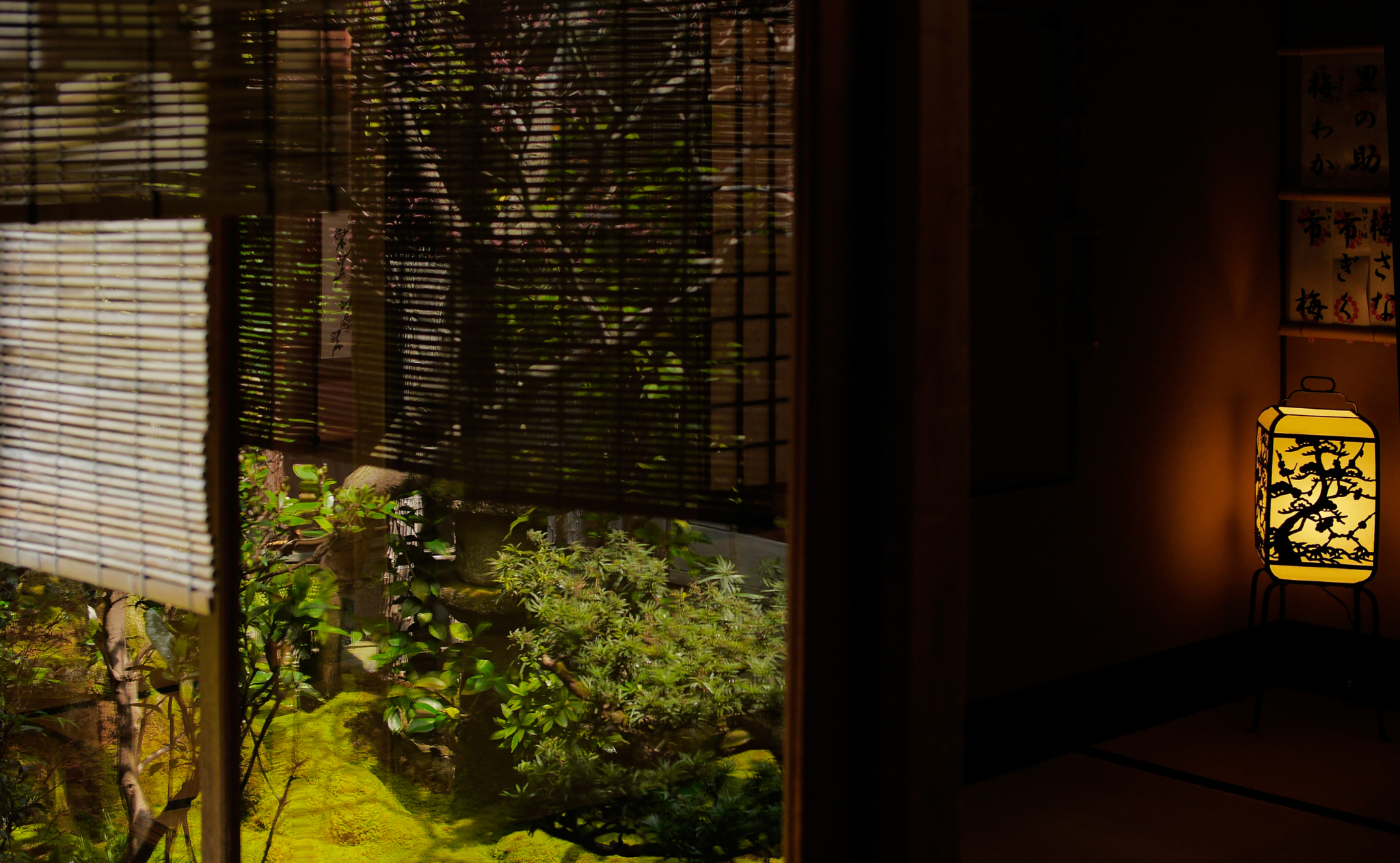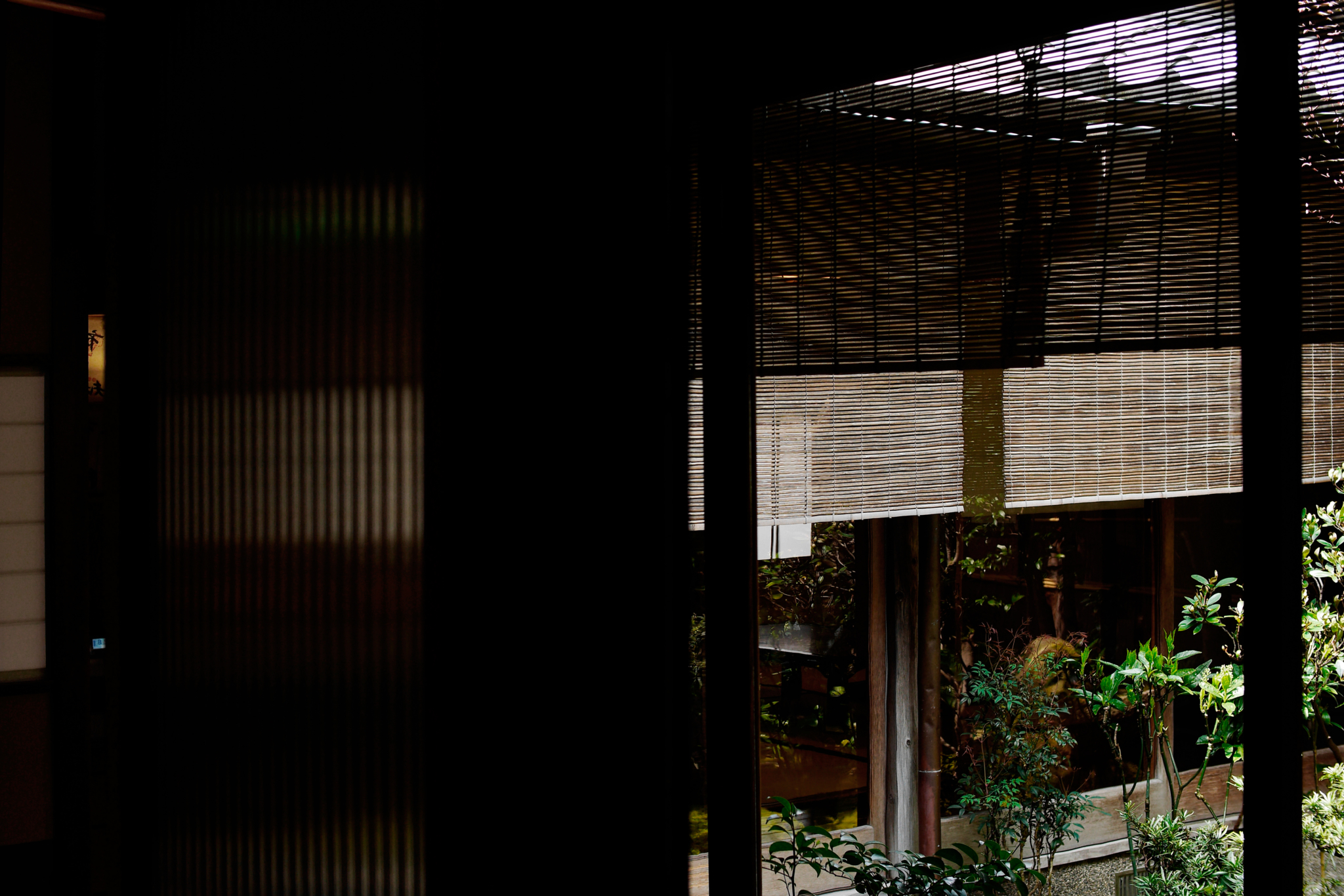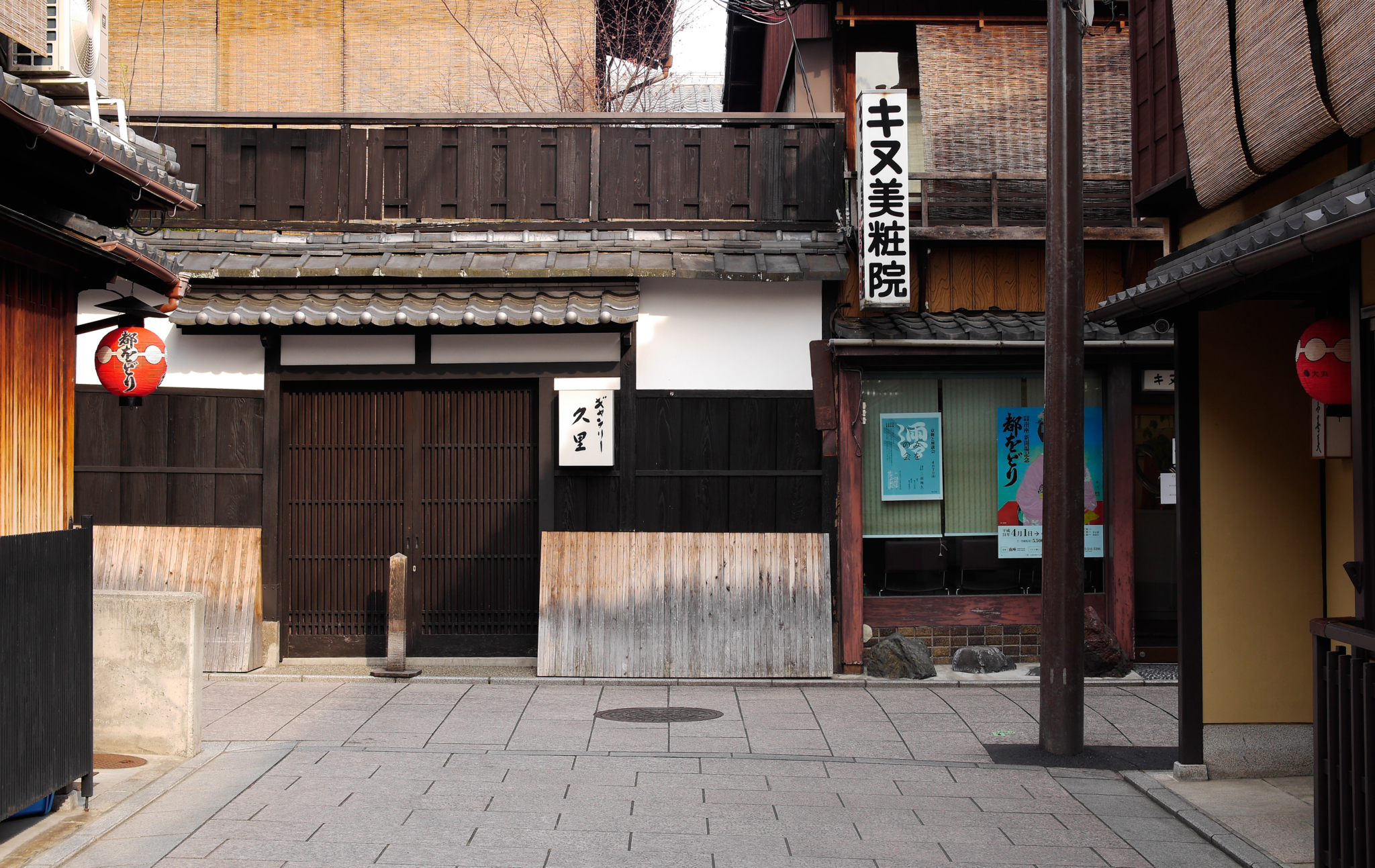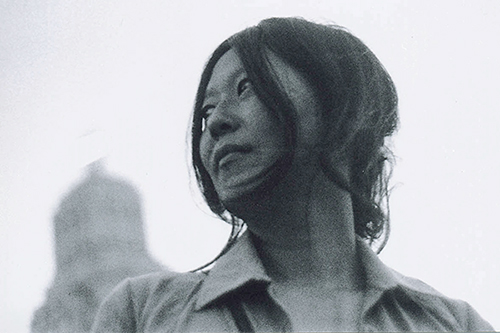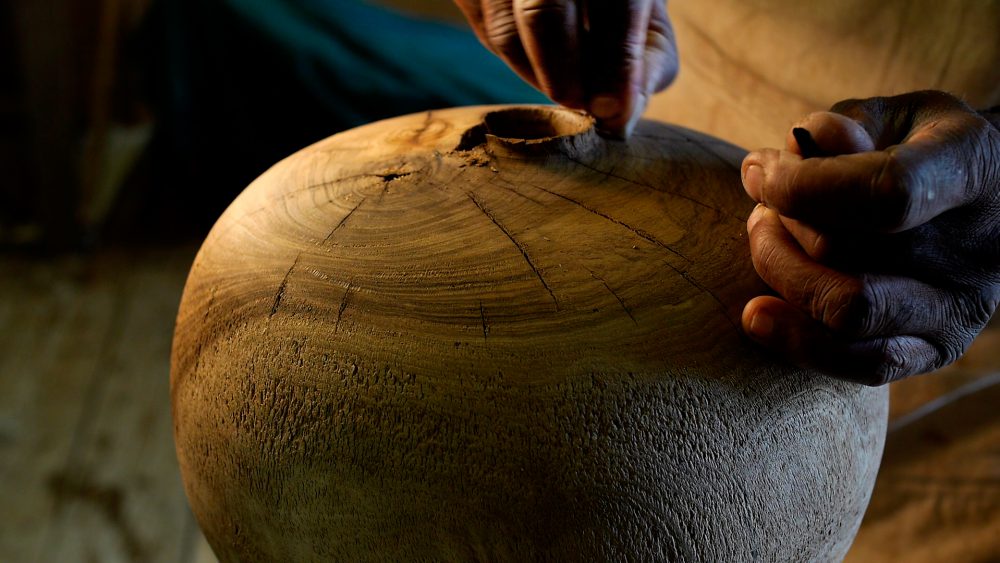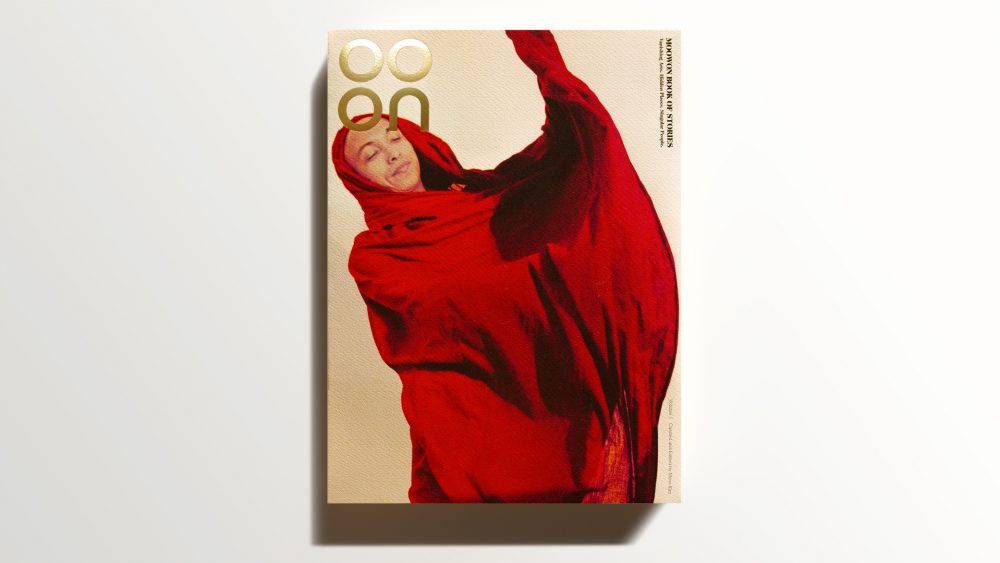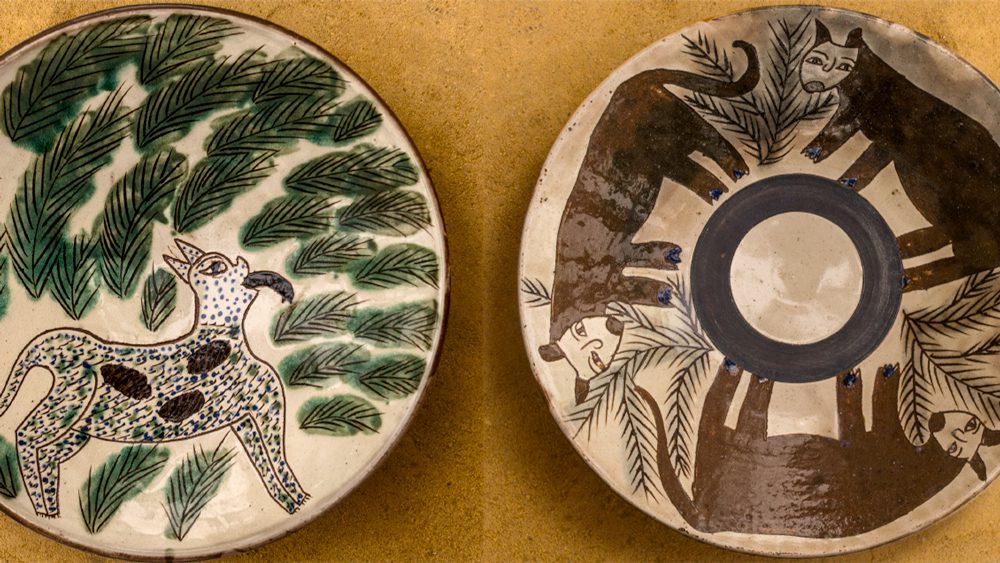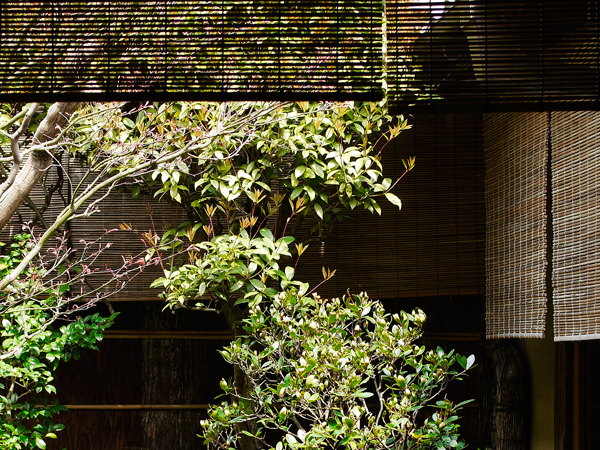
with the suffering of a torn heart,
but approaching the sudare,
I can listen through it your loving voice
like the waves of the sea
– Poem of Fujiwara no Kanesuke, Gosen Wakashū [Book 11], Renka, love song 3 (“48th poem”)
In a quiet backstreet of Kyoto, at the edge of the town’s geisha district called Gion, a gentle old man with snow-white hair and a magical twinkle in his eyes patiently and mindfully arranges thin slats of bamboo. These pieces are alligned onto a mysterious manual contraption that resembles a cross between an organ and a large antique sewing machine. This historical machine that resides in the old craftsman’s humble atelier, produces an odd and uneven clacking sound rhythmed to the pace of the foot pedal.
This man, Minoru Tanaka, is making sudare, which are Japanese blinds or screens made from bamboo, wood, reed, or natural resources. These materials are whittled into uniform-sized slats that are woven together with string or yarn. To weave and sew these materials together, Mr. Tanaka uses an old foot-operated, hand-fed machine that has been in use since the Taisho Era (1912-26). Although sudare are mass produced today at cheaper costs or imported from countries such as China, there still remain a few craftsmen who handmake and manufacture them as a form of traditional handicraft.
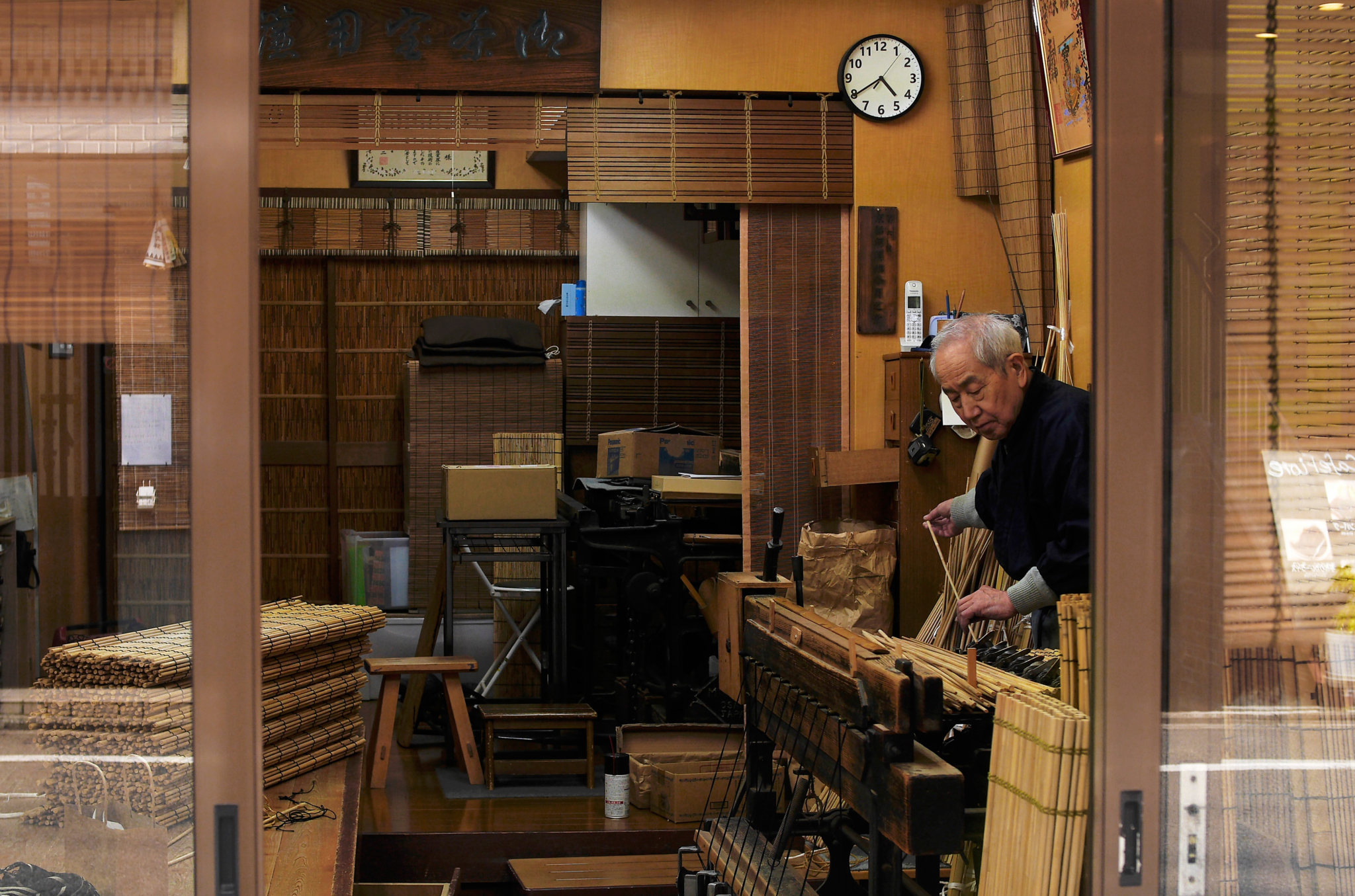
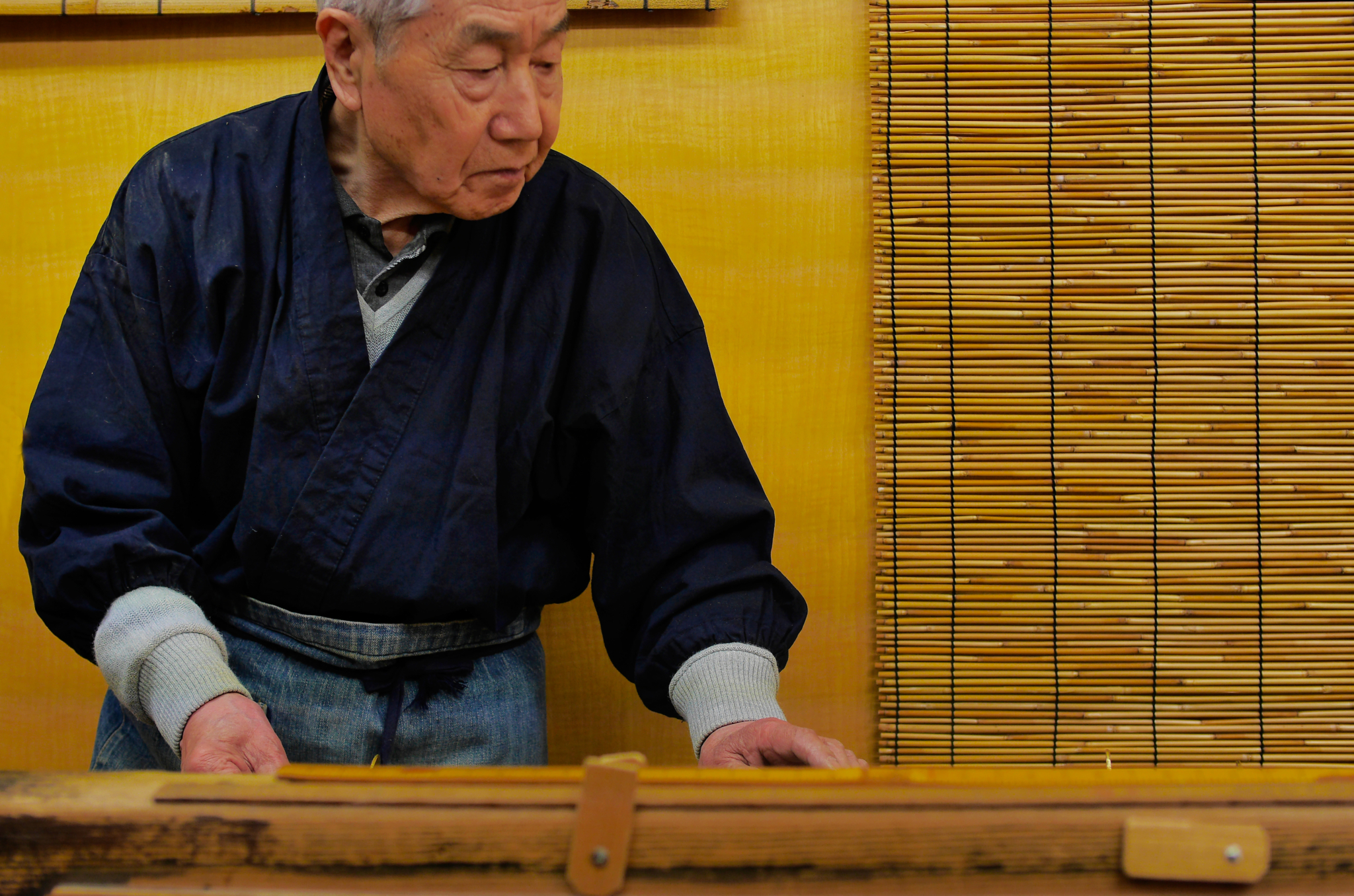
Traditional Craftsmanship
However, behind this seemingly-ordinary everyday object that Mr. Tanaka painstakingly crafts, lies something more than its obvious functions and excellence in Japanese craftsmanship. Unbeknownst to many, the sudare’s fascinating roles and nuanced uses date over 1,400 years in Kyoto. They blended into both the ordinary life and imperial settings, and even appeared in historical literary forms.
Due to its prevalence, sudare’s significance is not apparent, especially when compared to other craft forms that, on the outset, appear to be higher forms or seem to hold an honorary status.
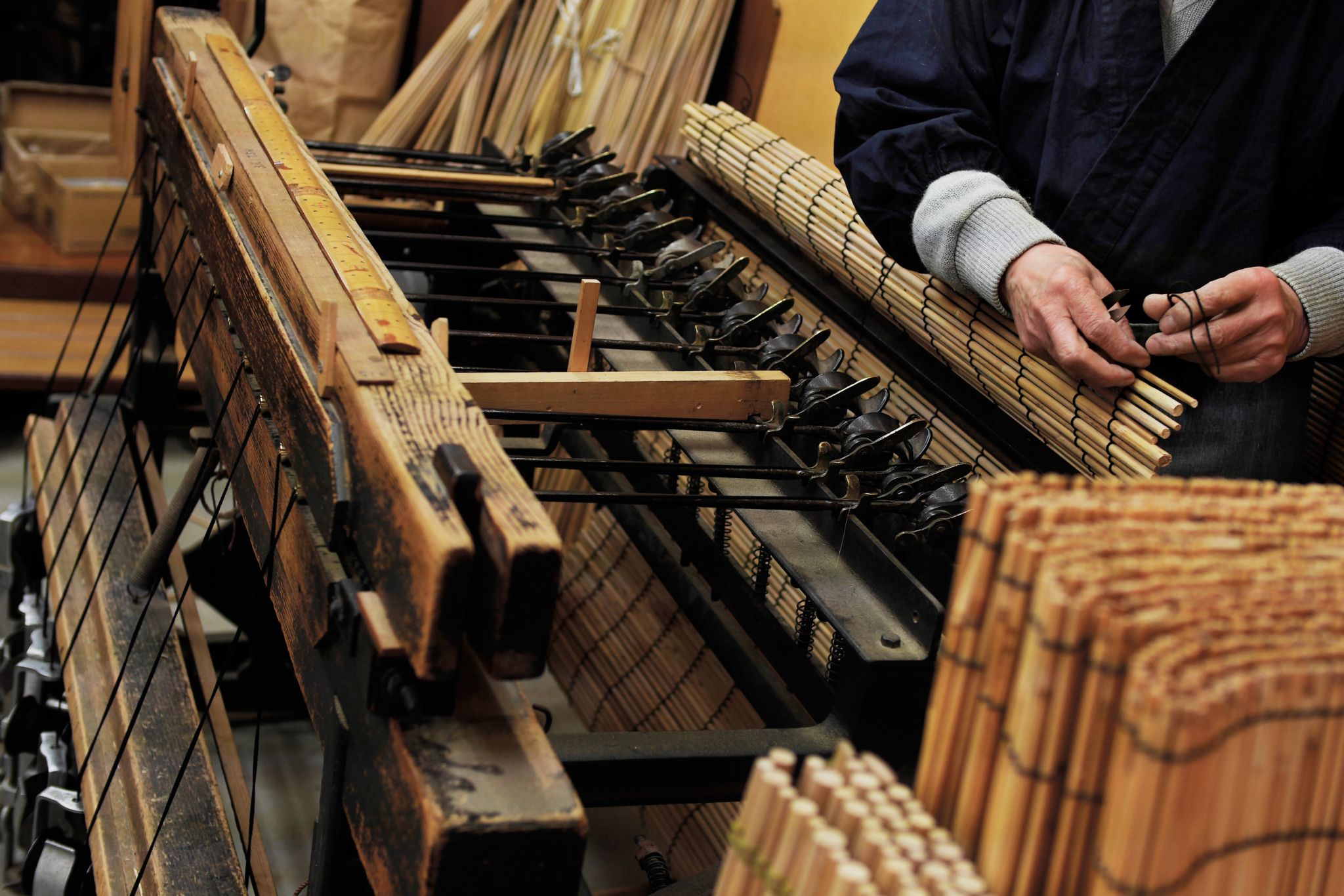
To enjoy the full story, become a Member.
Already a Member? Log in.
For $50/year,
+ Enjoy full-length members-only stories
+ Unlock all rare stories from the “Moowon Collection”
+ Support our cause in bringing meaningful purpose-driven stories
+ Contribute to those in need (part of your membership fee goes to charities)
EDITING: COPYRIGHT © MOOWON MAGAZINE /MONA KIM PROJECTS LLC. ALL RIGHTS RESERVED.
PHOTOS & TEXT: COPYRIGHT © MONA KIM / MOOWON MAGAZINE. ALL RIGHTS RESERVED.
TO ACQUIRE USAGE RIGHTS, PLEASE CONTACT US at HELLO@MOOWON.COM
